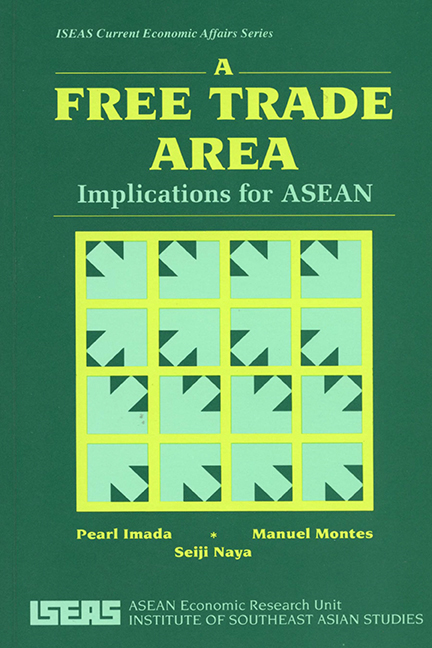Book contents
5 - Conclusion: A Time for Rethinking
Published online by Cambridge University Press: 21 October 2015
Summary
Both models, despite differences in methodology, base years, and coverage of goods, show that reduced preferential tariff barriers will have a positive, but not substantial, effect on trade and production in the region. Intra-ASEAN trade expands significantly in both models, in some cases by more than 50 per cent. This represents an increase of between US$1 and US$2 billion of manufactured exports. Trade with the rest of the world declines slightly, leaving only marginal changes in total trade. Because of the relatively small size of intra-ASEAN trade, the increase in trade enlarges the share of intra-ASEAN trade to total trade by about 10 per cent or less. A change in production patterns is predicted in the partial equilibrium model, though the total change in production is marginal. The problems of both models have been briefly discussed and the exclusion of possible dynamic effects or feedbacks in both make these estimates low-end for the possible effect of preferential tariff reductions in ASEAN. At the same time, the models do not account for problems caused by non-tariff barriers and different industrial standards or codes, and both assume no trade deflection.
The conclusion that can be drawn is not unequivocal. There are gains in terms of increases in intra-ASEAN trade, but the gains in terms of increased total trade and income are likely to be small.
Nonetheless, several factors may contribute to moving ASEAN in this direction. First, it should be noted that ASEAN is more prepared than it was in the past (and in the base periods of the models) to proceed with integration as their levels of industrialization and tariff differentials converge. The increasing industrialization of Indonesia and the lowering of trade barriers and privatization in most of the resource-rich countries will serve to reduce the potential sources of conflicts and problems of integration. In addition, these changes are likely to increase the gains ASEAN will reap with integration. Secondly, if tariff reductions are closely co-ordinated with industrial co-operation, gains accrued are likely to be larger.
- Type
- Chapter
- Information
- A Free Trade AreaImplications for ASEAN, pp. 34 - 35Publisher: ISEAS–Yusof Ishak InstitutePrint publication year: 1991



